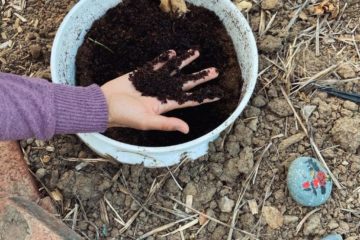Written by Anastasia Mathews, Nonprofit Management Intern
What is Regenerative Agriculture?
According to the organization Regeneration International: “Regenerative Agriculture is a holistic land management practice that leverages the power of photosynthesis in plants to close the carbon cycle, and build soil health, crop resilience and nutrient density” (2017) In other words, regenerative agriculture involves practices that not only prevent harm to the land and environment, but work to actively improve it. The goal is to restore a healthy human relationship with the land so that the land can continue to support farming for generations to come.
For a list of some practices that can be used in regenerative agriculture, you can refer to this short document by the Regenerative Agriculture Initiative and The Carbon Underground.
Regenerative Agriculture has Roots in Indigenous Practices and Knowledge
While the regenerative agriculture movement is fairly new in mainstream culture, many of the practices and knowledge that it’s based on comes from Indigenous knowledge. Before European settlers, Indigenous people in North America lived in harmony with the land for thousands of years. The practices used for generations to grow food are often the ones that are most sustainable. Part of this is attributed to a culture that views themselves as part of the land; as one Indigenous farmer said “We cultivate the land while the land cultivates us.” (Pace 2015) Thinking in terms of regenerative agriculture requires a sense of land stewardship and a reciprocal relationship with the land, acknowledging that the land provides for us, and we need to take care of it in return.
An example of a beneficial practice that comes from traditional Indigenous knowledge is intercropping. Much of industrial agriculture uses monocropping – a system where only a single crop is planted and grown. Growing the same thing in a large area makes the crops susceptible to pests and leads to nutrients being stripped from the soil. Intercropping, or planting different crops together, come from indigenous practices. (Heim, 2020) This can have benefits that include increased productivity, improved soil health and pest management.
Our Agricultural System Today and the Use of Regenerative Agriculture
The agricultural system in the US today utilizes practices that cause soil erosion, nutrient loss and runoff into waterways , and pose a critical threat to soil biodiversity. (NRDC, 2021) This system relies on synthetic inputs such as fertilizer and pesticides in order to keep growing crops, because the system would otherwise collapse. An industry-wide move to using more regenerative practices would help to ensure that the land is kept healthy and can be productive for the demands of generations to come.
In the gardens we help design and maintain at Each Green Corner, we employ regenerative practices whenever possible. In our Living Campus Gardens, we utilize compost and crop rotations to keep the soil healthy and to cycle nutrients. We also use minimal pesticides, and often have pollinator gardens to provide the habitats for beneficial insects.
Many of these are practices that you can incorporate into your own garden too! Start small in your own backyard by starting a small compost or intermingling veggies! Both are tangible steps to create a more regenerative food system, in our backyards!
Resources
About. (n.d.). Regenerative Agriculture Foundation. Retrieved April 18, 2022, from https://regenerativeagriculturefoundation.org/about/
Indigenous Agriculture and Sustainable Food. (n.d.). Retrieved April 18, 2022, from https://sustainablefoodcenter.org/latest/gardening/indigenous-agriculture-and-sustainable-food
Nrdc. (2021, November 29). Regenerative Agriculture 101. NRDC. https://www.nrdc.org/stories/regenerative-agriculture-101
The Indigenous Origins of Regenerative Agriculture. (2020, October 12). National Farmers Union. https://nfu.org/2020/10/12/the-indigenous-origins-of-regenerative-agriculture/Why Regenerative Agriculture? (n.d.). Regeneration International. Retrieved April 18, 2022, from https://regenerationinternational.org/why-regenerative-agriculture/


0 Comments